Activity: A Visit to the 9/11 Memorial Museum, World Trade Center, Downtown, New York, USA

This post is one chapter in our trip to New York City via Cathay Pacific First Class. This trip was booked using American Airlines AAdvantage miles and Starwood Preferred Guest points. For more information on how this trip was booked, please see our trip introduction here. For other parts of the trip, please see this index.
If you enjoyed this post, please follow us directly or on social media on Facebook, Twitter or Instagram for more travel tips and hacks on how to “Upgrade Your Travels”.
Read more from this trip:
- Introduction: New York, USA via Cathay Pacific First Class
- Cathay Pacific First Class Lounge, Vancouver, Canada
- Cathay Pacific First Class: Vancouver – New York JFK
- Westin Grand Central Station, New York, USA
- City Visit: New York, New York, USA
- 9/11 Memorial Museum, New York, USA
- The Gordon Ramsey at the London, New York, USA
- Spice Market, the Meat Packing District, New York, USA
- Balaboosta, Little Italy, New York, USA
- British Airways First Class Lounge, New York JFK, USA
- British Airways Galleries Business Class Lounge & Pre – Flight Dining, New York JFK, USA
- Cathay Pacific First Class: JFK New York – Vancouver
Activity: A Visit to the 9/11 Memorial Museum, World Trade Center, New York, USA
This has to be, still, one of the harder posts to write.
All of us have been affected by the incidents of 9/11 in some way or another. Even though we’ve each been affected by this act, it can’t come anywhere near as close to anyone that has lost a loved one, family member, someone as flight crew, or a friend on September 11, 2001.
9/11 Memorial Museum,
Liberty St, New York City, NY 10006, United States
on Memorial Day, 2014.
The museum itself is split into two separate parts. The “inner” museum (also known as the Historical Exhibition) contains most of the artifacts and history of the incident. The “outer” museum (also known as the Memorial Exhibition) contains larger artifacts of items involved on September 11, 2001. The “inner” museum was the most difficult museum I’ve ever visited in the world. Both museums are behind the paid admission gates of the 9/11 Memorial Museum.
During our New York visit, I knew that I wanted to take in the 9/11 Memorial Museum. After some perseverance, we were able to gain tickets for a visit on Day 4 of the Museum’s operation (Memorial Day 2014). I was unable to purchase tickets on line through the website. It seemed it would not accept Canadian Credit Cards and I kept getting error messages. I ended up going to the ticket office on the day of our arrival and secured two tickets with a 3 day waiting period (the soonest visit times were 3 days away).
Visiting Memorial Plaza at World Trade Center:
First, the beautiful memorial plaza in the shadows of the original towers. There were many white flowers out in memory of loved ones on our Memorial Day visit.
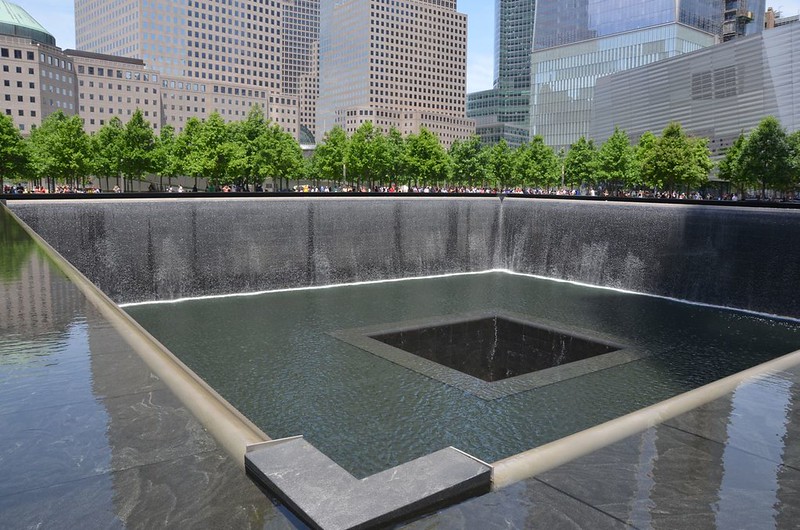


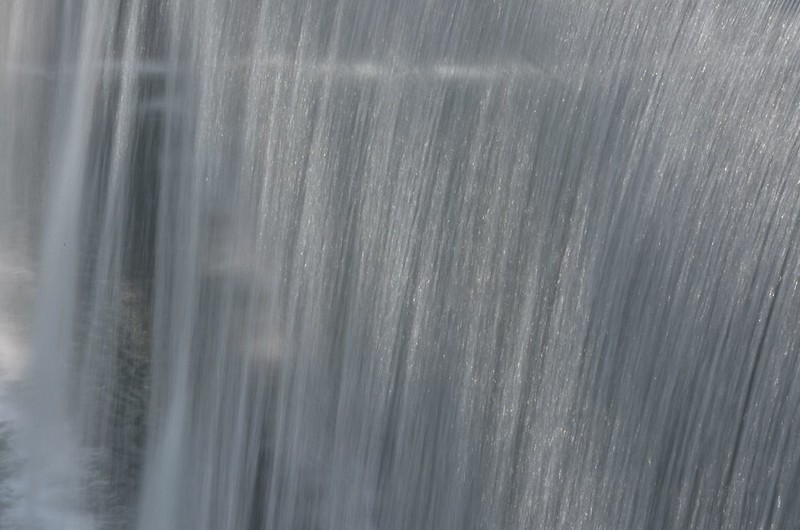

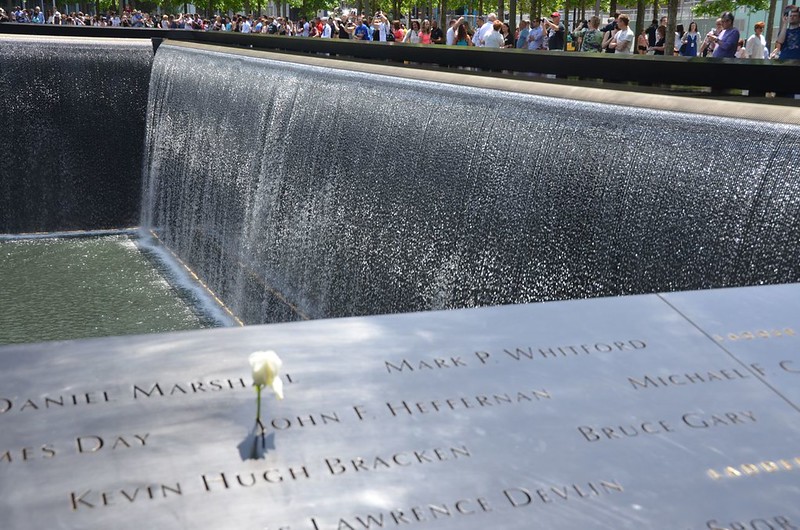
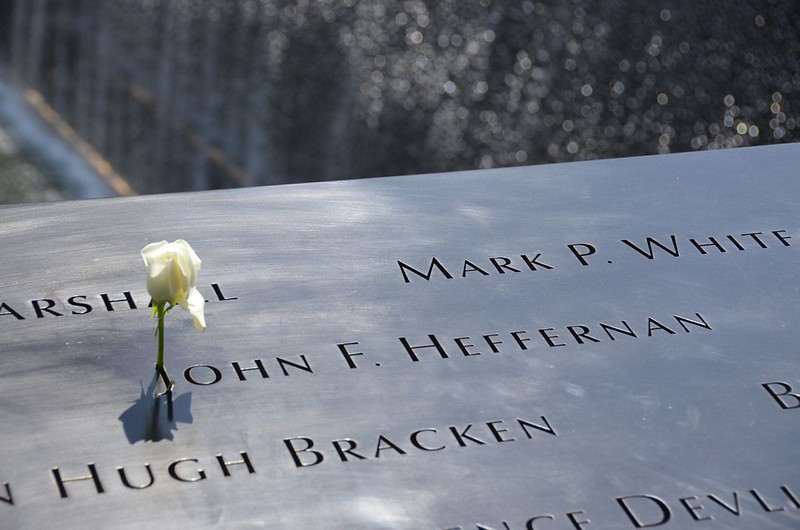


Tickets in hand, we entered the museum with a 1 PM ticket at 12:30 PM. We were subjected to a full TSA airport style security screening (less the ID podium check). It’s the only museum that I’ve ever been to that was under guard by members of the local police department as opposed to a contracted private security company.
Visiting the 9/11 Memorial Museum:
The entry ramp of the “outer” museum started with a sound scape of voices and people remembering their experiences of 9/11. The ramp led to the original foundation level of the twin towers. Slide images of the onlookers on the streets of Manhattan watching the twin towers collapse in horror are shown- they are almost the forgotten images of 9/11. These images were so present during the newscasts of those days and weeks but you don’t seem them so much anymore. Watching the images took you back immediately to that day and the fright in these spectator’s eyes as they watched history unfold firsthand. The downward walk started with one of the last scenic photographs of the Twin Towers, and ended with an overview of the large retaining wall used by the old Twin Towers against the Hudson River.


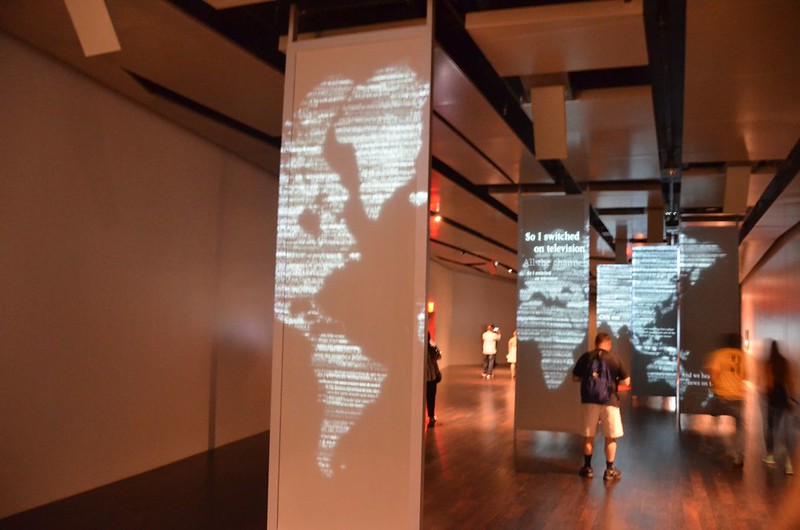
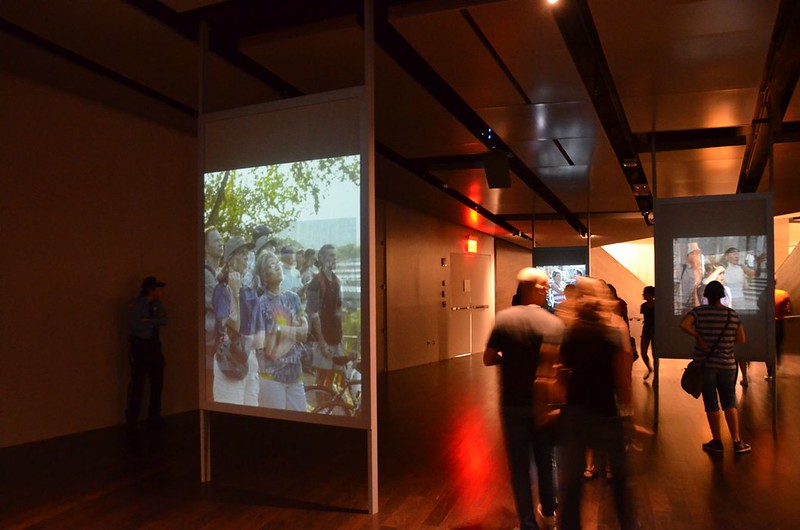
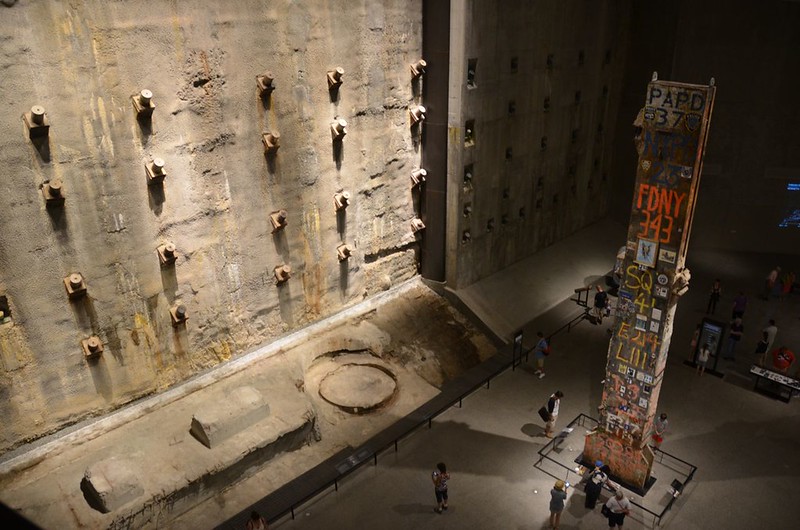
Some of the artifacts included the original dedication plaque to the towers, some how it survived the collapse.

On the bottom floor, the “inner” museum featured the September 11, 2011 historical exhibition. It’s walled inside a large multi room soundproof container. A sign outside actually recommends that visitors under 10 years of age not attend. I’d have to agree. No photographs are allowed inside the inner exhibition so I only have experiences to share today.
Inside the exhibition it’s a totally different experience from the outer museum. In the Memorial Exhibition, you are pretty much free to take in any exhibit in any order. The Historical Exhibition locks you into a set path where you move along with the group in order of the phases. The exhibition is set up in three phases.
Phase 1 The Day 9/11
Phase 2 Before 9/11
Phase 3 After 9/11
As I said earlier, this was the most heart wrenching museum that I’ve ever visited. I wasn’t alone in thinking this as the sounds of sniffles are ever present throughout the various museum spectators that I had heard as we walked along together, but apart in our viewing.
Starting with the first phase, you’re immediately shocked back into the reality of what we all experienced on September 11, 2001. The museum has collected and assembled the voicemail messages of all those in the towers that called home for help, those that called the fire department to report where they were on floor 100 or higher, those on United 93 that had heard what had happened in New York and had left messages for their loved ones explaining what they planned to do, those radio calls from firemen to their dispatchers desperately calling for additional help to deal with the disaster. The recordings are played in the background as you walk through the exhibits of the museum. The recordings make it impossible to remain impassive about the museum and add a third dimension to the artifacts. I couldn’t help but hear the strength in the voices of the dead – people’s voices with such determination, clarity and focus, knowing full well that we all knew how it turned out in the end.
The museum contained many physical articles (recovered from wreckage) related to the day of September 11, 2001. I was interested in seeing Todd Beamer’s scarred wrist watch and recovered business card from flight United 93. Match that along with the stories of his, and others actions’ on United 93 as the legacies that they left behind pulls at your emotions and what true heroes they actually were.
The museum has a slide show collection of “the falling man images”. As you may recall, the initial news coverage on that day showed images of those persons, estimated to be between 50 and 200 people, that jumped from the top of the towers to their death in the streets below. In my hometown of Vancouver, the media stopped showing these images on television because they were simply too graphic to watch. Here, in a hidden corner of the inner exhibition, was a slide show of the photo images captured of those that decided to jump. Jumping because it was the better option versus something else that was so horrifying, it is hard to turn away. Testimonials on the wall include quotes from witnesses who observed women jumping, while adjusting their skirts prior to falling- thinking that it was a very noble thing to do prior to falling to your death.
The examples go on and on… Hearing the voice of a flight attendant on United 93 leave a last message for her husband, telling him that she loved him and that she dearly hoped to see his face again is something that really can’t be put into words. It’s unusual to be able to get close to humanity in such a way for an incident that was over in a few hours. It ultimately made me pray that all of the Commonwealth lives that have been lost through the war in Afghanistan and at home fighting domestic terrorism have been worthwhile.
The museum itself was so hard wrenching and difficult to consume at time. By the time you get through the inner museum to phase 3, your heart had seen enough. I personally wasn’t able to give the last phase of the museum – the Al-Qeada history and documentary exhibition, the attention that it deserved.
The outer museum permitted photography. It contained the survivor stairs where a few of the last remaining survivors made it out of the WTC towers.
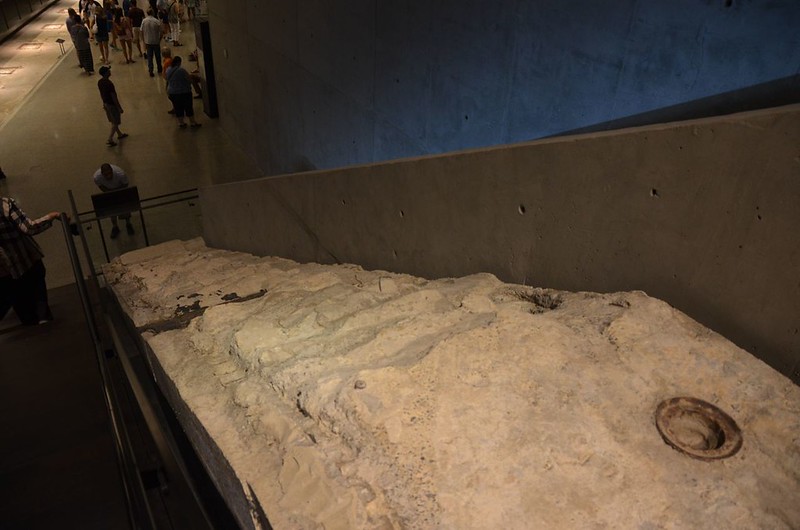
There were also several examples of the 9/11 memorabilia that had been collected, including a giant patchwork quilt and the statute of liberty model found near the base of WTC that contained many patches of first responders that assisted in the recovery efforts.

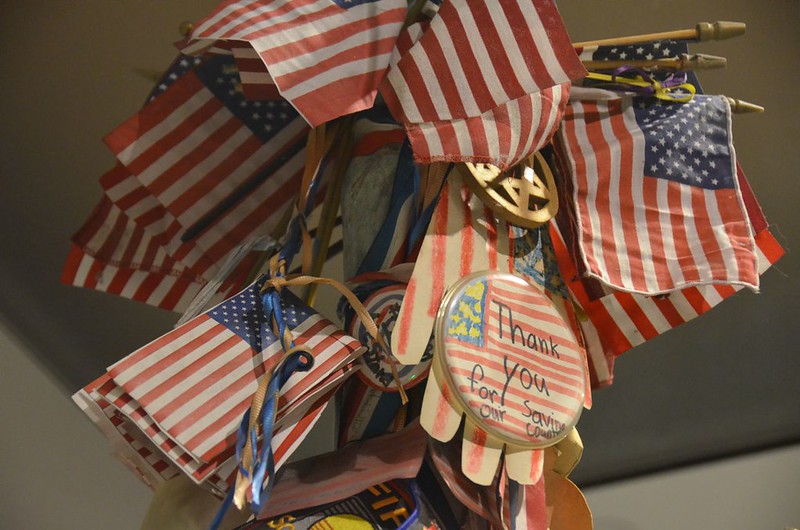
And some of the steel façade tower pieces that were on the North Building between floors 93-96. The photograph in the placard showed the actual position of this massive piece on the building.

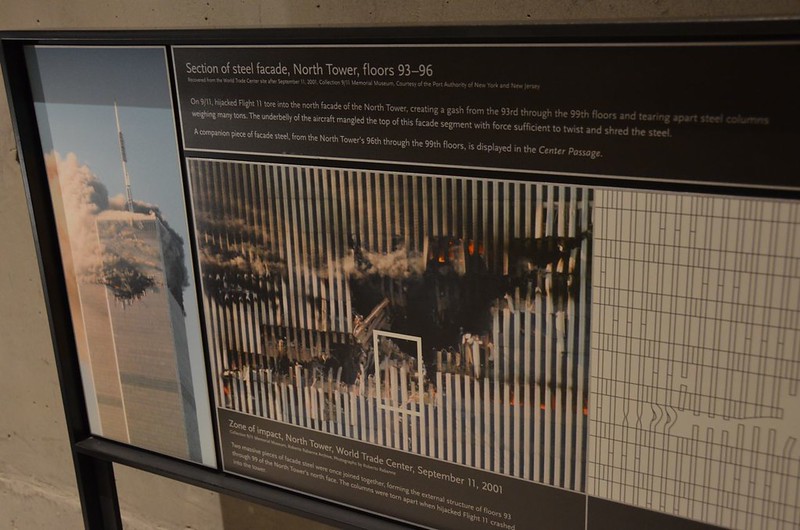
There were several other examples of how massive the force mush have been when the building collapsed. It’s hard to imagine the pressure on steel that is bent and burnt like this.


The memorial hall occupied the end of the outer museum, including biographies of all 2,983 that were killed in the attacks on September 11, 2011 and February 26, 1993.


The hall was further highlighted by a beautiful colored exhibit entitled “Trying to Remember the Color of the Sky that Morning”.
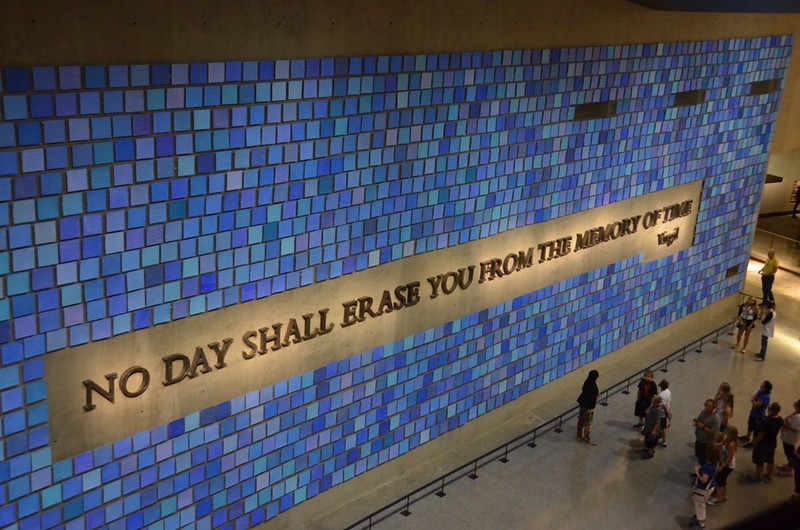
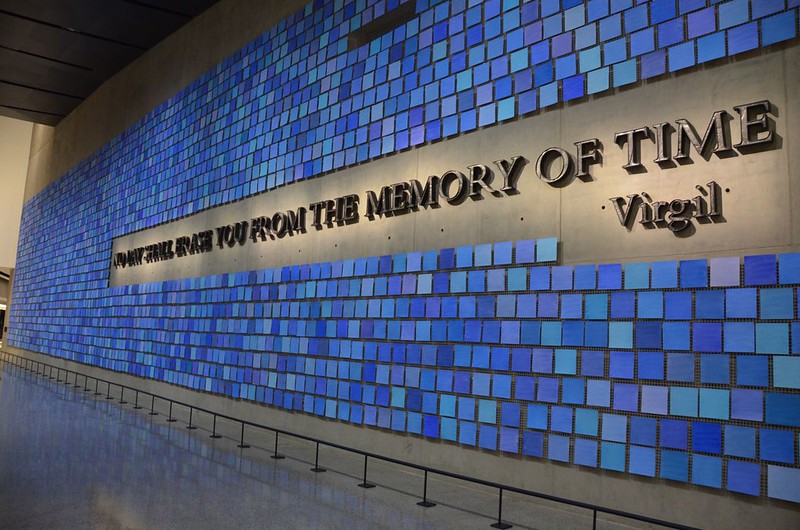
In the memorial exhibition, there was a film entitiled “Rebirth at Ground Zero”. We lined up for it but it was a little hit or miss. It displayed the rebuilding of the site.
Another interesting series of exhibits were the Ladder 3 truck. The Ladder 3 truck of the New York City Fire Department was one of the initial fire crews on site. The entire company was killed in the first response as they were in the building somewhere above floor 35.

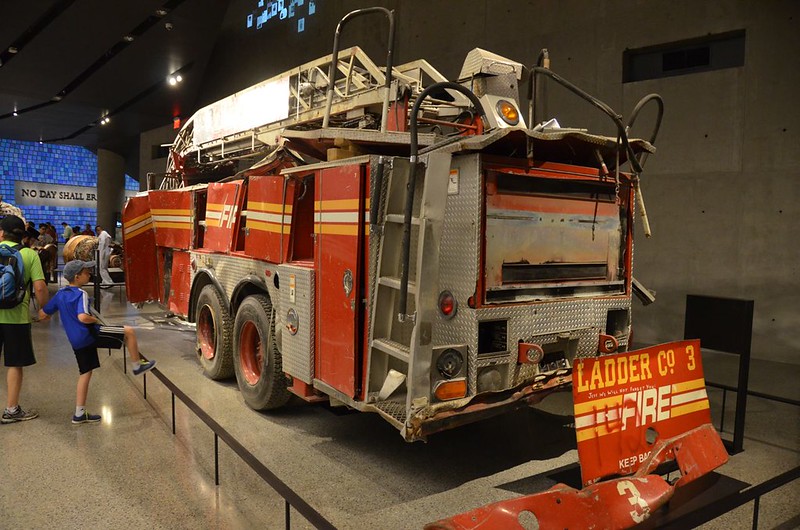

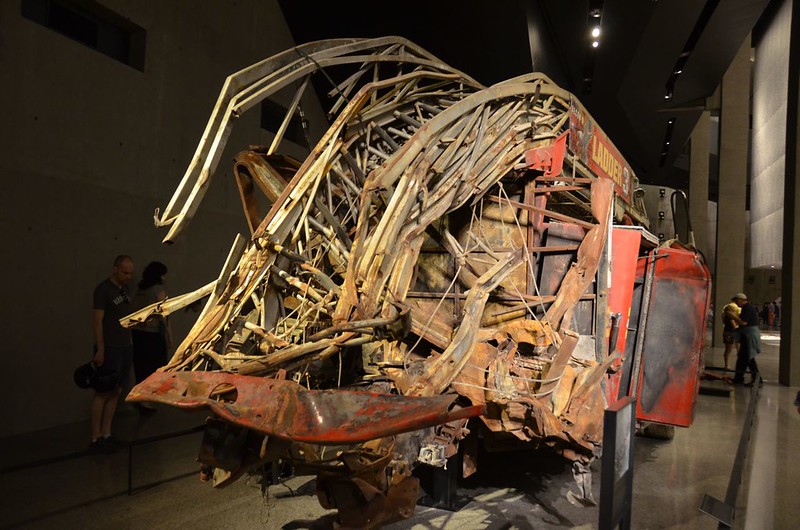
There were also segments of the radio and television towers on the roof of the towers that fell to the ground, somehow still intact.

There were also elevator motors that somehow made it down intact after falling 110 floors.

Along with a closer look at the sump wall, there were also a multimedia display of some items that were as a result of 9/11- including a Transport Safety Administration timeline relating to air travel.

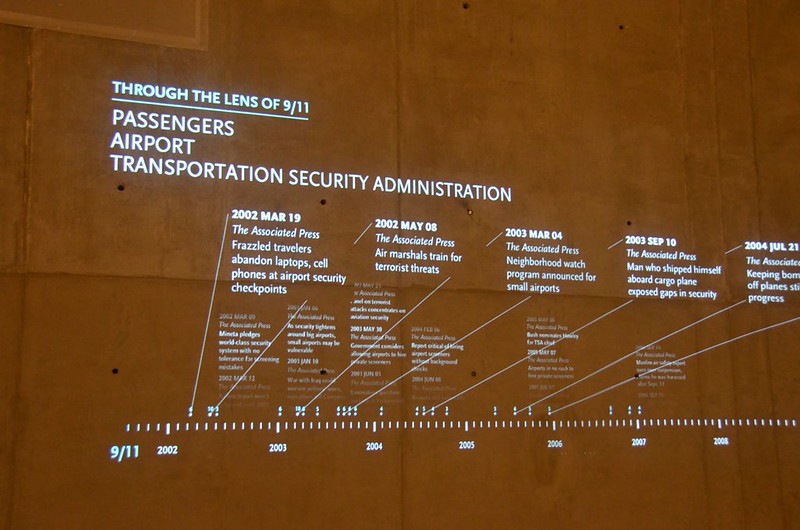
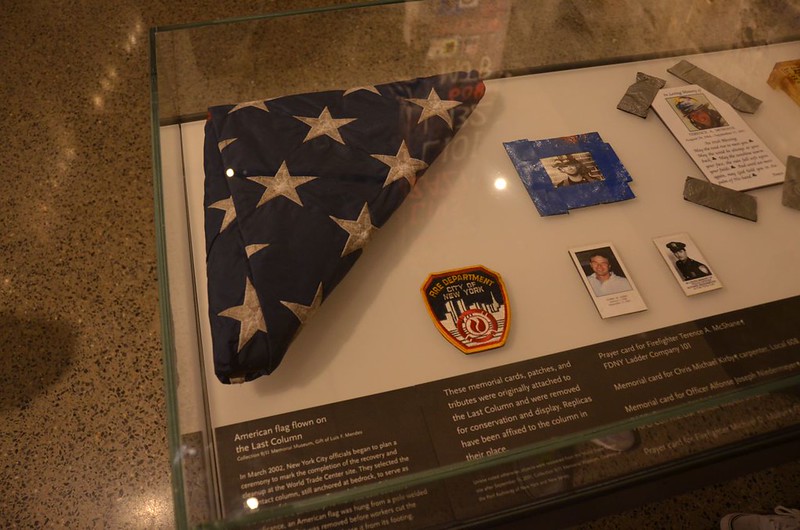
Hidden upstairs, above the main entrance, is the auditorium. At the time of our visit, the auditorium was showing a documentary film, with interviews of several key figures: George W Bush, Condoleezza Rice, Rudolph Giuliani, and George Pataki among others highlighting the challenges faced with the leadership in dealing with an evolving situation. This particular documentary had received some notoriety in the press as it felt that it did not demonstrate a significant difference between Muslims and Al-Qaeda. The exhibit was mostly missed by most museum visitors, and is not printed in the museum brochure so be sure to ask for it if you are interested. I found it to be among the most interesting parts of the museum.
In Summary and Memory:
Our museum visit took us 4 hours, including a visit to all exhibitions and all films. I figure I read about 60% of all materials that were presented. If you are interested in giving the museum the respect it deserves, and are an aviation and a law enforcement geek like I am, allow yourself a minimum of 3 hours. We expected about 2 – 2.5 hours and ran over time with a 4 hour visit.
Our children are very fortunate in that they will be able to review history in a manner that is exceptionally well documented and unprecedented unlike any other generation. The sad part about this museum visit is that it will be a deeply emotional experience by the time that they are old enough to fully comprehend the significance of what they are seeing.
 World Traveller 73
World Traveller 73 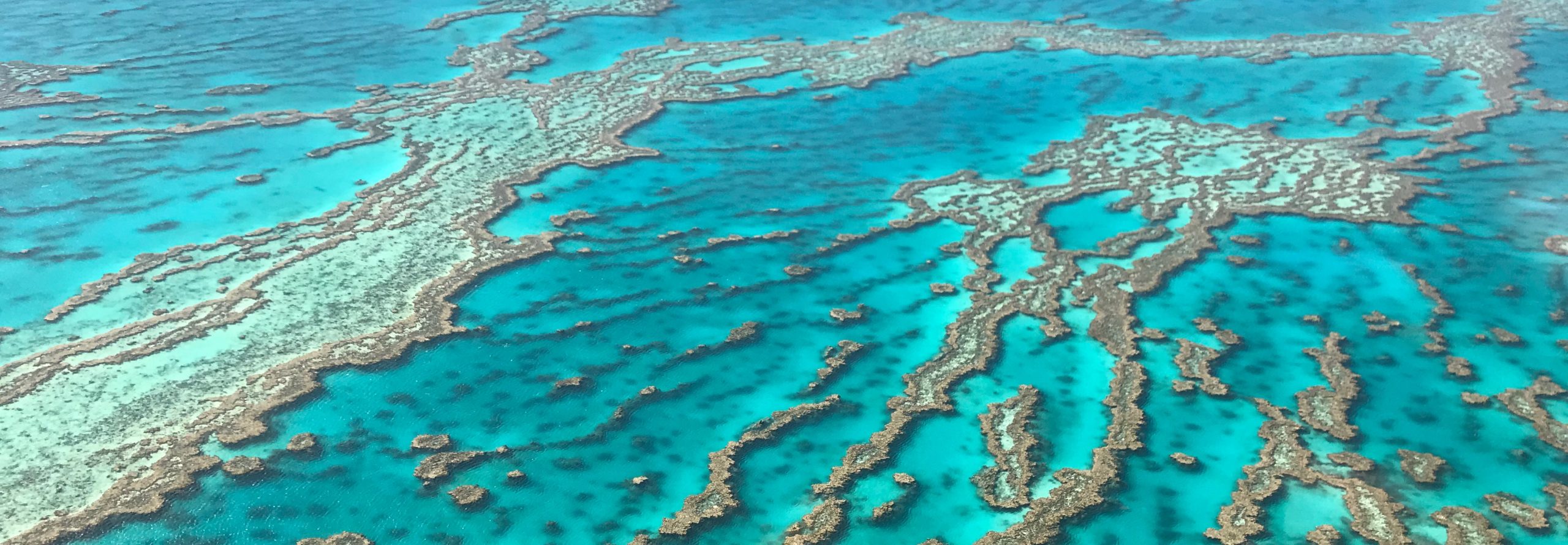

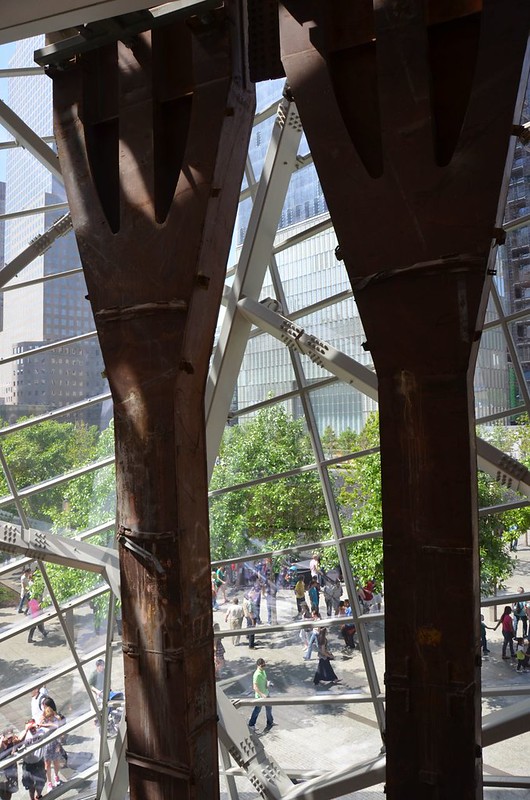

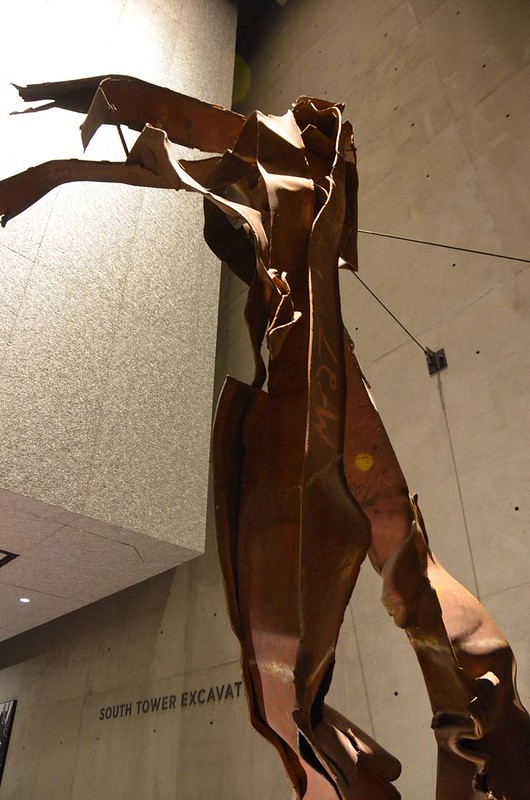
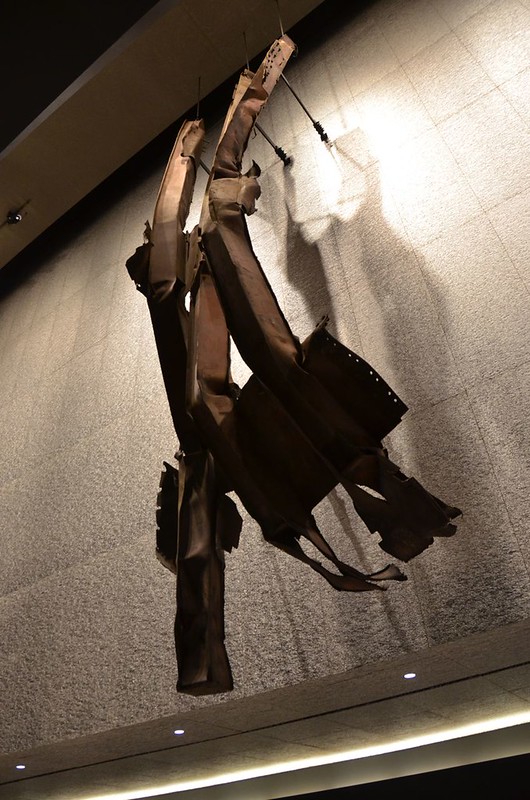
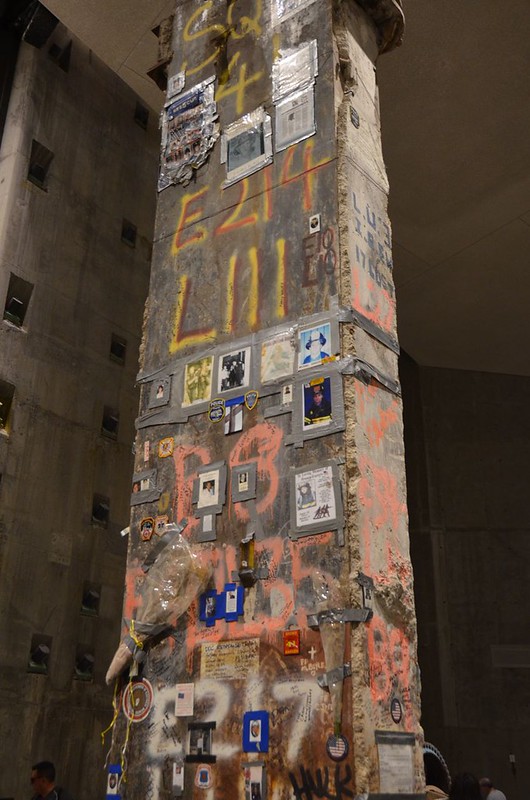


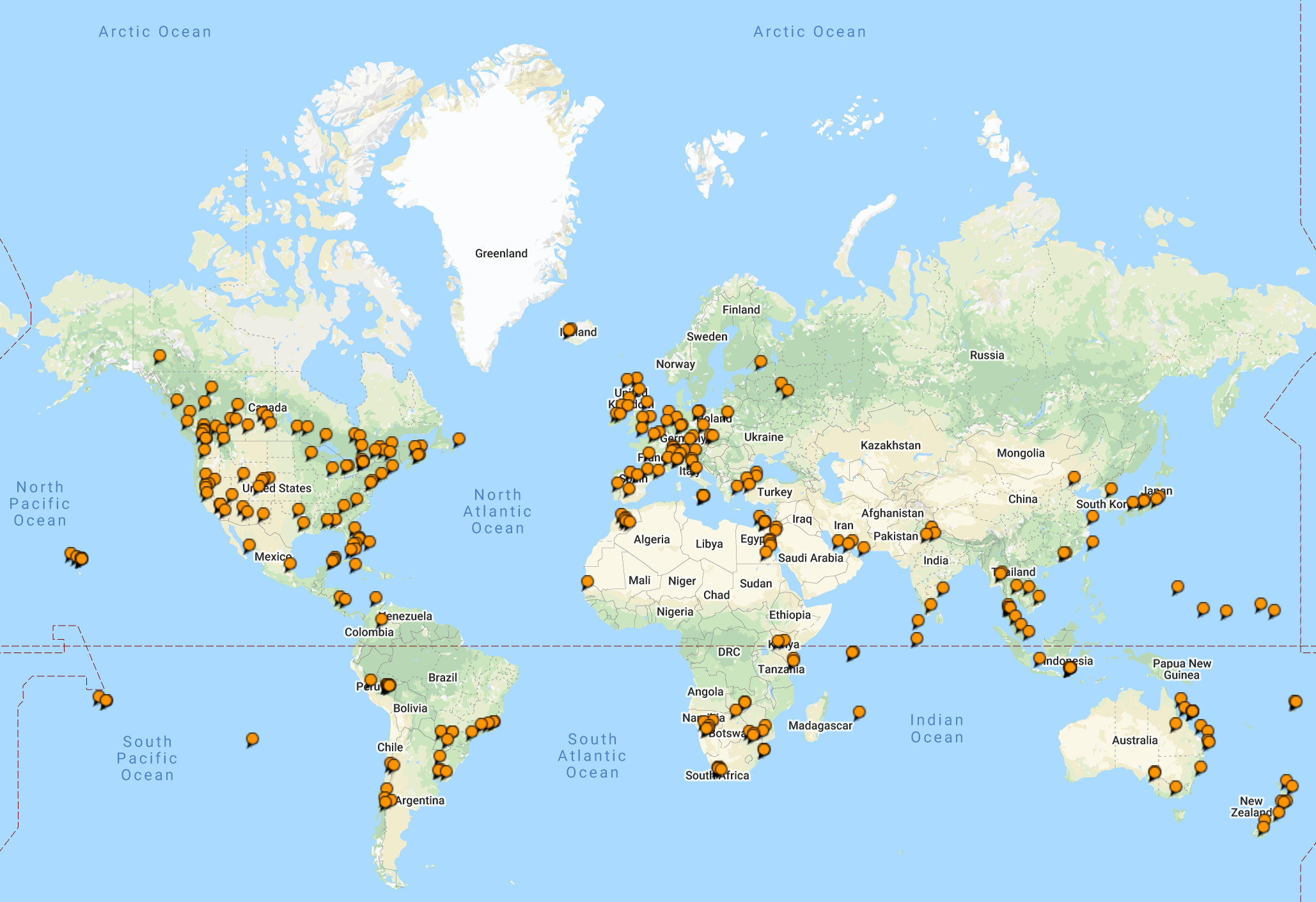
Recent Comments